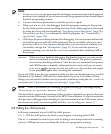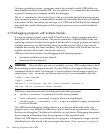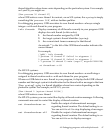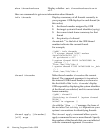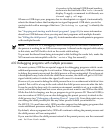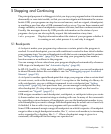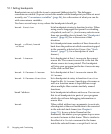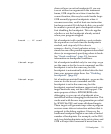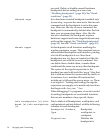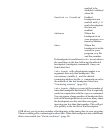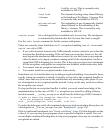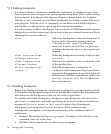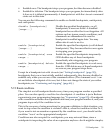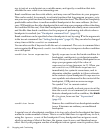does not leave an active breakpoint. If you use
break without an argument in the innermost
frame, GDB stops the next time it reaches the
current location; this may be useful inside loops.
GDB normally ignores breakpoints when it
resumes execution, until at least one instruction
has been executed. If it did not do this, you would
be unable to proceed past a breakpoint without
first disabling the breakpoint. This rule applies
whether or not the breakpoint already existed
when your program stopped.
break ... if cond Set a breakpoint with condition cond; evaluate
the expression cond each time the breakpoint is
reached, and stop only if the value is
nonzero―that is, if cond evaluates as true. '...'
stands for one of the possible arguments described
above (or no argument) specifying where to break.
See “Break conditions” (page 59), for more
information on breakpoint conditions.
tbreak args Set a breakpoint enabled only for one stop. args
are the same as for the break command, and the
breakpoint is set in the same way, but the
breakpoint is automatically deleted after the first
time your program stops there. See “Disabling
breakpoints” (page 58).
hbreak args Set a hardware-assisted breakpoint. args are the
same as for the break command and the
breakpoint is set in the same way, but the
breakpoint requires hardware support and some
target hardware may not have this support. The
main purpose of this is EPROM/ROM code
debugging, so you can set a breakpoint at an
instruction without changing the instruction. This
can be used with the new trap-generation provided
by SPARClite DSU and some x86-based targets.
These targets will generate traps when a program
accesses some data or instruction address that is
assigned to the debug registers. However, the
hardware breakpoint registers can take a limited
number of breakpoints. For example, on the DSU,
only two data breakpoints can be set at a time, and
GDB will reject this command if more than two
5.1 Breakpoints 53



